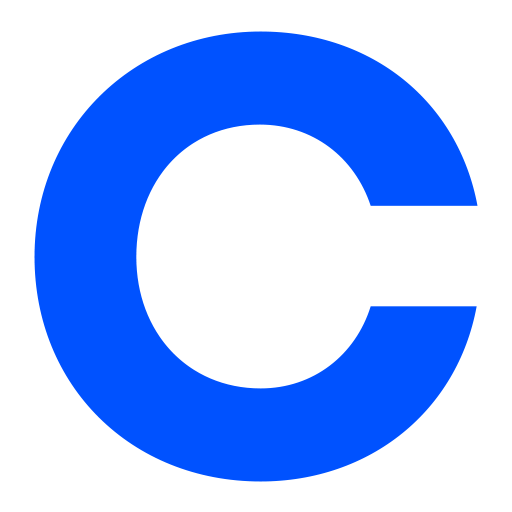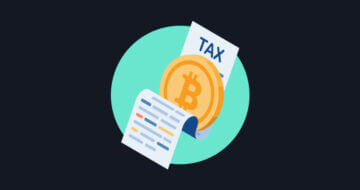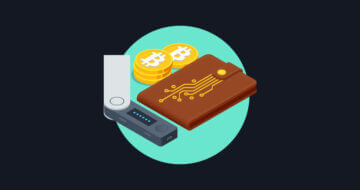
The complete guide to buying DAI
DAI is a stablecoin backed not by a reserve of fiat currencies but instead by other cryptocurrencies, balanced in such a way as to retain a $1 peg.
DAI has been a strong and reliable presence in the stablecoin field since its creation in December 2017, although there are changes being proposed that would fundamentally alter how it operates, and potentially even its nature as a stablecoin. But what is DAI and how does it work? Let’s find out.
What is DAI?

DAI was founded on December 18, 2017 by MakerDAO, an Ethereum-based decentralized autonomous organization (DAO) that creates and maintains the DAI Stablecoin System – a decentralized platform that runs on open-source code and relies on smart contracts to manage its tokens and transactions.
DAI was created to solve the problem of cryptocurrency volatility. Like all stablecoins, the goal of DAI is to provide stability in the cryptocurrency world where prices can fluctuate wildly and unpredictably. The DAI stablecoin was created to serve people who want to trade in cryptocurrencies but don’t want to be exposed to volatility 24/7, and also allows people to take out loans on their collateral to expand their portfolio.
DAI is an ERC20 token created by those who lock up other cryptocurrencies, typically ETH, as collateral and is present on most of the top exchanges. The MakerDAO governance system ensures that decisions taken on the future of the coin are taken democratically by those with a vested interest.
How does DAI work?
DAI is pegged to the value of one U.S. dollar, but it is backed by a range of cryptocurrencies rather than dollars themselves. The primary cryptocurrency backing DAI is USDC which helps it stay pegged, but, as we will see, this may change in the coming years.
DAI is created from an overcollateralized loan/repayment process facilitated by MakerDAO’s smart contracts in the form of a decentralized application (dApp).
Users deposit cryptocurrencies accepted as collateral (mainly ETH) and are able to borrow against the value of their deposits to receive newly generated DAI tokens. The minimum collateralization ratio for ETH is currently set at 150% which means that depositing $150 worth of ETH allows the sender to borrow up to 100 DAI.
This overcollateralization ensures that, barring a catastrophic and permanent collapse in the value of cryptocurrencies, the value of the collateral will always remain above the amount borrowed.
If the collateralization ratio falls below the minimum ratio, anyone can call a function on the contract to liquidate the loan and receive a percentage of the collateral as a reward.
When the DAI is ready to be converted back into the original collateral, the DAI itself is burnt, thus preventing inflation of the market cap.
This process allows DAI to say that it is backed by the dollar value of the underlying collateral held by MakerDAO’s smart contracts. By controlling the types of accepted collateral, collateralization ratios, and the interest rates for borrowing or storing DAI, the MakerDAO protocol is able to control the amount of DAI in circulation.
Why should I buy DAI?
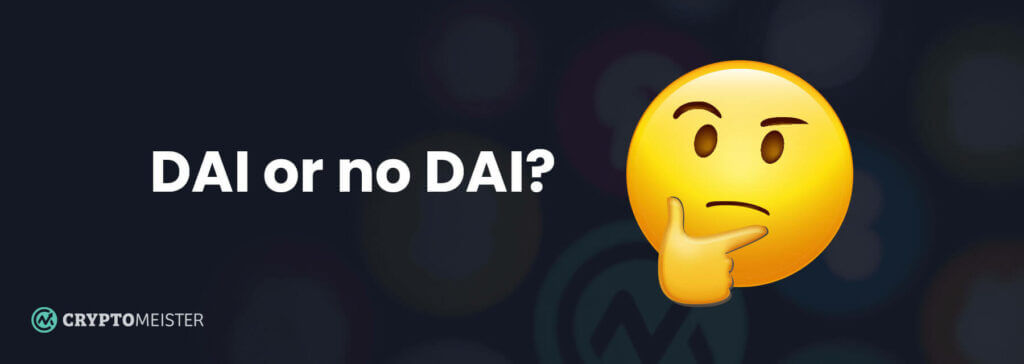
DAI has a single core purpose – to act as a price anchor in times of volatility. Therefore, if you’re looking for big gains in a bull market, DAI isn’t going to be for you.
However, if you’re looking to save your capital but don’t want to cash out into fiat, DAI could be a great option. It is also a way of borrowing against your existing portfolio to purchase more cryptocurrency.
The question is then, why should you buy DAI over other stablecoins? There are several reasons why you might consider DAI over the likes of Tether (USDT) or USDC, which we’ll discuss here.
Decentralized ownership
DAI is one of the only fully decentralized stablecoins in the ecosystem. Unlike the likes of USDT and USDC, it is not owned by a company and therefore isn’t beholden to corporate bosses or shareholders.
It was created to be a coin that investors could move to when needed that could not be seized by a government or other authorities, so it’s important that is has no corporate owners.
Collateralized Backing
DAI is backed by a basket of other cryptocurrencies, with the mechanism in place ensuring that the value of DAI does not react to volatility in price.
Unlike some bigger stablecoins, it is not backed by fiat currencies (or in the case of USDT, a complicated mess of other financial instruments) and all the proof of its backing is openly available for all to see on the blockchain.
Democratic Governance
If MakerDAO wants to make any changes to the DAI protocol, they must first be ratified by stakeholders using the DAO’s governance model.
Holders of MakerDAO’s MKR token are allowed to vote, a process that requires the locking up of those tokens to do so. This ensures that votes are not frivolously cast and means that no single person can control the protocol.
What is a DAI wallet?
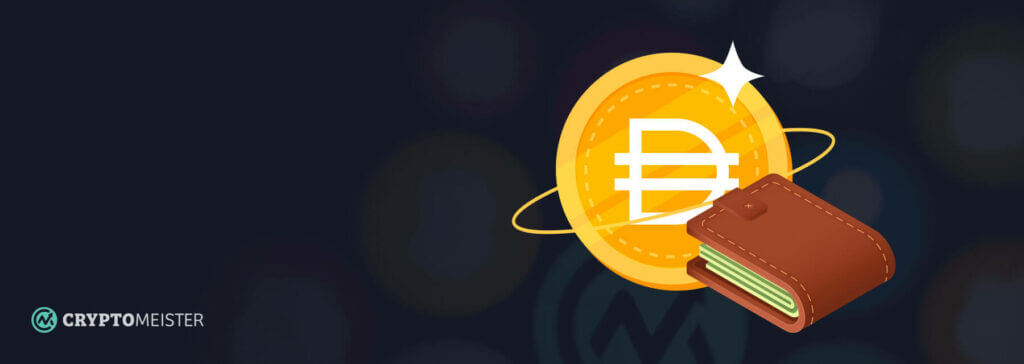
To hold DAI you’re going to need a crypto wallet (unless you’re buying it from an exchange). If you don’t already have a wallet, here’s what you need to know about storing your DAI.
Software wallets
A software wallet is a type of cryptocurrency wallet you find on your phone or through a web browser or app. Popular examples include Metamask, Exodus, and Trust Wallet and they are very convenient ways to store your DAI. There are many examples of such wallets out there, and any wallet that accepts Ethereum will accept DAI, seeing as DAI is a token on the Ethereum blockchain.
Typically, software wallets (known as ‘hot wallets’) will not allow you to store your private key, which is the equivalent to the main password to the wallet. If they don’t, then this means that the company behind the wallet is storing it – theoretically giving them, or any bad actors who might gain access to their servers, the opportunity to take your funds, however minimal this risk is in reality.
Hardware wallets
Hardware wallets (often referred to as ‘cold wallets’) are physical devices that are kept offline when not used, meaning that the chances of being hacked are massively reduced. They are usually similar in design to USB sticks and allow you to store your private key yourself, meaning that no third-party will control your DAI. popular brands include Ledger and Trezor.
The process of sending DAI to either of these wallet types is the same. In your wallet you will have either an address for DAI or Ethereum tokens in general (these will be the same). When you generate/buy your DAI tokens, simply put this address into the relevant field when you want to withdraw and the DAI will arrive there after a couple of minutes.
How does a DAI transaction work?
DAI is built on the Ethereum blockchain, which, as of September 2022, runs on a proof-of-stake consensus mechanism. This means that a DAI transaction goes through the following stages when it is sent from one person to another.
The moment you submit a DAI transaction, the instruction is added to the next block to be processed. When the next block of transactions is ready to be processed, the protocol will choose a ‘validator node’ to process them.
Once the validator node has done this, other validators check to see if the transactions in the block are accurate or if anything is suspect. If everything is fine, the block is added to the blockchain, the DAI is sent to the recipient, and the validator receives rewards in ETH for their efforts.
The small fee you pay to process the transaction (known as ‘gas’) is burnt. The whole process takes just a few seconds, providing the network is not working at capacity.
However, if a validator has been found to have proposed adding a block that contains inaccurate information, they lose some of their staked holdings as a penalty. This incentivises honest behavior on the blockchain.
Are there any risks with DAI?

Even though it is a stablecoin, DAI’s structure means there are certain things you should consider before buying it, which we will list here.
Collateral risks
MakerDAO has taken steps to ensure that the DAI token remains at $1, part of which is through having more than 34% of each DAI token backed by USDC stablecoins. However, at the end of the day DAI is still backed only by cryptocurrencies, even if some are stablecoins, meaning that it still relies on the stability of these coins to maintain its peg.
Weighted voting
One of the issues with the decentralized governance protocol adopted by Maker DAO is that the votes are decided by MKR token weight, rather than by the number of votes. This means that voters can lock up as many MKR tokens as they like rather than having just one vote each. This can allow whales to dominate one side of a vote if they feel particularly strongly about it, potentially skewing the votes.
Prior Depegging
DAI hasn’t always been valued at $1. In November 2019 it dropped to $0.927, taking three weeks to get back to $1 again. In contrast, in March 2020 it shot up to $1.06 and didn’t come back down to $1 for another two months. Therefore, its stability cannot be guaranteed.
Future changes
As we will explain shortly, MakerDAO is considering removing USDC from its reserves. This will inevitably cause the DAI to depeg and fluctuate, with the potential for a “free floating” coin being discussed that could drastically alter its function and usage.
How can I buy DAI?
There are two ways to buy DAI tokens – from an exchange or to mint it yourself.
Minting DAI
If you want to mint DAI from existing collateral, you’ll first need a compatible wallet. You don’t need to have the collateral in that same wallet, but this is recommended to avoid confusion.
It is also recommended to have collateral equaling twice the dollar value of the DAI you wish to mint in order to reduce the risk of defaulting.
With your collateral in your wallet, head over to the Oasis protocol and connect your wallet. Once you do this you will be given a list of cryptocurrencies, from which you should choose the denomination your collateral is in. You will be told how much collateral to send over.
Send the collateral to the address provided. Once the transaction is complete, a Collateralized Debt Position (CDP) will be opened and the corresponding DAI will be minted. These DAI tokens will be sent to your wallet, which you can then send on anywhere else.
Don’t forget, when you want to recover your deposited collateral, you must pay back all of the DAI loan plus something called a ‘stability fee’.
A stability fee is a variable-rate fee continuously added to your generated DAI balance and is designed to address the inherent risk in generating DAI against collateral. A portion of the stability fee goes towards sustaining the operational costs of the Maker Protocol.
Once you have returned the DAI, the CDP is closed and your collateral is returned to your wallet.
Exchanges
The other way to buy DAI is through an exchange. DAI can be bought and sold through hundreds of centralized and decentralized exchanges, and is a much easier process than minting it.
The process of buying DAI on an exchange is the same as buying any other coin – find out what trading pairs are supported on your chosen exchange (e.g. DAI/USDT) and make a swap on the exchange. You can also buy with a debit/credit card and bank transfer as we will explain shortly.
The advantage to buying DAI on an exchange is that you only need to provide the dollar value of the DAI you want to buy. In other words you don’t need to provide twice the collateral, and there is no risk of you defaulting on a CDP. It is also a process that contains fewer steps, and no stability fee.
How can I pay for DAI?
There are many ways you can pay for DAI, some of which we have already covered and some of which we haven’t. We will address these now.
Debit/credit card
You can purchase DAI tokens with both credit and debit cards through a centralized exchange, such as Coinbase or Binance. You will need to be registered with the exchange to be able to buy from them in this way, but many crypto users already will be registered to a centralized exchange.
Buying DAI in this manner is simply a case of selecting the ‘buy’ option on the exchange (usually found on the front page), selecting ‘DAI’ and entering how much you want to buy in your local currency. Then you will need to enter your debit/credit card details as with any online purchase, check out, and the DAI tokens will be dropped into your exchange account.
Be aware that some banks don’t allow cryptocurrencies to be purchased with their cards, so confirm this first before you purchase in this manner.
Bank Transfers
For those that can’t use a bank card, another option is a bank transfer. This is a slightly different process, but the end result is the same – simply transfer over the fiat value of the DAI you want to buy into your exchange account, and then use those funds on the platform to buy the DAI.
Cryptocurrency
As we have already outlined, you can use cryptocurrency to buy DAI in one of two ways – you can either use it as collateral to mint new DAI tokens, or you can swap a cryptocurrency already in your portfolio for DAI on a centralized or decentralized exchange.
Please note that centralized exchanges will require you to send the cryptocurrency in question to the exchange before you swap, while decentralized exchanges will allow you to keep the crypto in your wallet for the swap.
How is DAI shaping the future?
DAI remains the trailblazer for a new breed of stablecoins that are backed by crypto collateral rather than fiat currency. Some of these have worked, such as DAI, while others have failed catastrophically, most notably Terra USD. However, those that fail tend to have taken the risk element too far and neglected any stability or security in their protocols.
However, DAI could be in for a fundamental shift that would see it change its entire nature. Following the decision by USDC owners Circle to freeze funds suspected of belonging to a terrorist organisation, MakerDAO co-founder Rune Christensen is considering stripping USDC from the DAI protocol.
With USDC currently making up more than a third of the backing for each DAI, this would represent a huge pillar of stability being removed from the protocol and would almost certainly result in DAI depegging from a dollar.
Christensen has said that the whole process could take years, but has suggested that DAI could end up being “free floating” rather than being tied to a dollar. These discussions are still in their infancy, but the fact that such a proposal is even being considered shows just how strongly the MakerDAO team feels about decentralization.
Is DAI a good investment?
Whie DAI itself isn’t suitable as an investment because its price will only rise as much as the U.S. dollar, it is nevertheless one of the more favored stablecoins because of its decentralized design and overall stability.
Its transparent backing means there are no secrets when it comes to what is behind it, but ironically, what’s backing it could itself be a cause for concern – were the crypto market to endure a catastrophic collapse of some sort, DAI could very likely go with it.
The fact that MakerDAO is considering a shift to a free floating model may also give potential buyers pause, as this may well mean that DAI fluctuates away from its dollar peg. However, this will likely not come to pass until 2025 at the earliest, so until then it represents a great choice for those who like their stablecoins with a more decentralized ethos.

